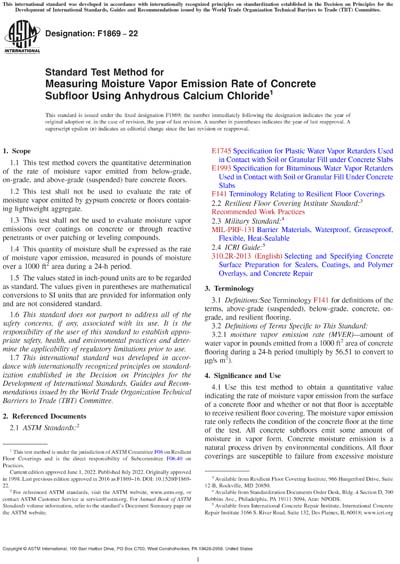Historical
ASTM F1869-22
Standard Test Method for Measuring Moisture Vapor Emission Rate of Concrete Subfloor Using Anhydrous Calcium Chloride
1.1This test method covers the quantitative determination of the rate of moisture vapor emitted from below-grade, on-grade, and above-grade (suspended) bare concrete floors.
1.2This test shall not be used to evaluate the rate of moisture vapor emitted by gypsum concrete or floors containing lightweight aggregate.
1.3This test shall not be used to evaluate moisture vapor emissions over coatings on concrete or through reactive penetrants or over patching or leveling compounds.
1.4This quantity of moisture shall be expressed as the rate of moisture vapor emission, measured in pounds of moisture over a 1000 ft2 area during a 24-h period.
1.5The values stated in inch-pound units are to be regarded as standard. The values given in parentheses are mathematical conversions to SI units that are provided for information only and are not considered standard.
1.6This standard does not purport to address all of the safety concerns, if any, associated with its use. It is the responsibility of the user of this standard to establish appropriate safety, health, and environmental practices and determine the applicability of regulatory limitations prior to use.
1.7This international standard was developed in accordance with internationally recognized principles on standardization established in the Decision on Principles for the Development of International Standards, Guides and Recommendations issued by the World Trade Organization Technical Barriers to Trade (TBT) Committee.
ASTM International [astm]

